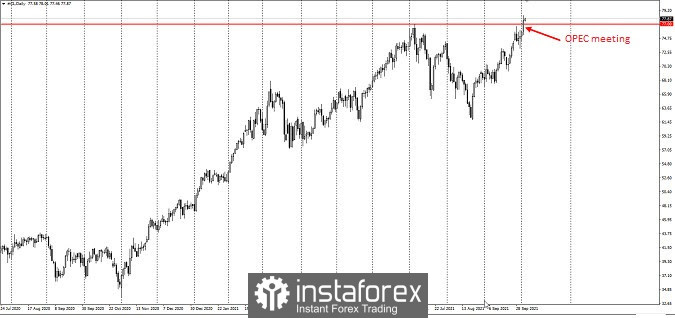
OPEC members agreed to maintain its previously-agreed production plan for November. Many initially suspected that the group would ramp up its output, but there was no proposal for an increase beyond the initial agreement. As such, the member countries will only add 400,000 b / d in November.
This news pushed WTI to jump 2.4% to $ 77.68.

Although oil is currently trading at multi-year highs, there was no sharp increase in competitors' supply. This suggests that OPEC has excellent control over the market, and in the coming months it is likely that its production policy will drive prices.
In Saudi Arabia, output is almost the same as pre-pandemic. Oil revenues are also the highest since 2018. If there is a threat to the delicate balance that OPEC and allies have reached, then these are only side effects from external crises.
Meanwhile, the recent shortage in natural gas, which has driven prices up, indicates the switch to petroleum products for use in winter as heating.
US output is also still recovering from Hurricane Ida. Back then, nearly 35 million barrels of oil were shed, which is equivalent to an increase in OPEC supply in two full months.
Concern is growing among consumer countries. Since prices for energy, metals, and food are rising, there may be another inflationary surge, which will again complicate the current monetary policy.





















